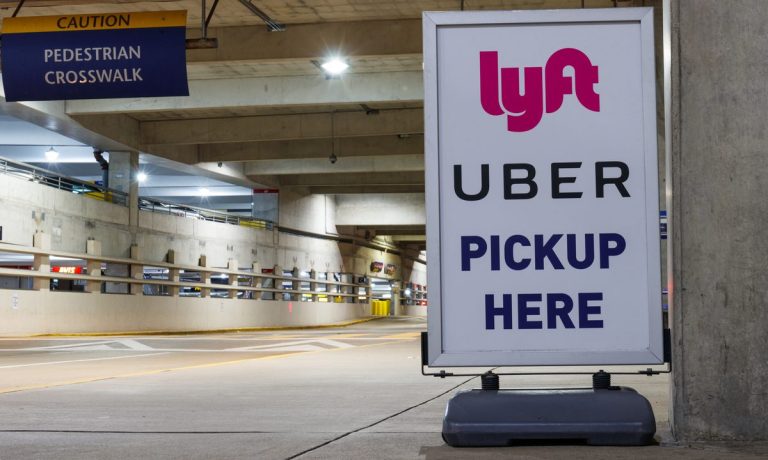Earnings Point to Different Routes for Lyft and Uber

Uber and Lyft bring to mind the oft-quoted Robert Frost poem.
You know the one — about two roads that diverged.
The rest of the poem is about the woods, the path not taken … but more than a century after its publication, it proves apt for online platforms, for the digital age.
Uber and Lyft’s most recent earnings spotlight the divergent paths the two companies have taken through the past few years. In broad strokes, both companies seek to match supply and demand, as any platform does. Lyft is focused on ride-hailing, while Uber has used ride-hailing and a host of other activities to build up cross-selling opportunities.
Wild Ride for the Stocks
Investors gave summary judgement on first-quarter results on Wednesday (May 8). At this writing, shares of Lyft were up 7%, and shares of Uber were down 7%.
The key drivers seem to be that Lyft’s projected that gross bookings for the second quarter will be up 16% to 19% year on year to $4 billion to $4.1 billion.
Uber, by way of contrast, has said that gross bookings in the same period will be $38.8 billion to $40.3 billion. But consensus estimates have been a bit over $40 billion — and Wall Street was swift to punish what it saw, arguably, as a case of slowing growth, to 18% to 23%, where that figure in the past had been in past quarters comfortably above 20%.
Some Similarities
In the meantime, gross bookings in the first quarter, already in the books, were similar. Lyft said growth on that metric was 20%, Uber said gross bookings grew by 21%. Active riders for Lyft were up 12% to 21.9 million. For Uber, the tally of monthly active platform consumers was up 15% to 149 million, defined as those who completed a mobility ride or placed a delivery order.
Among other similarities, both firms have noted the continued influx of drivers to their respective platforms, which illustrates the continued growth of the gig economy, and the fact that more individuals are turning to ride-hailing as a way to supplement their incomes. Uber’s results noted that 7 million drivers, in the words of CEO Dara Khosrowshahi, “choose to earn flexibility on Uber every month, with driver earnings of $16.6 billion continuing to grow faster than our topline.”
Lyft said in its earnings supplementals that it expects rides growth to be in the mid-teens percentage points.
During the conference call with analysts, Lyft CEO David Risher said that ancillary businesses, in the form of Lyft Media (where advertising is extended to riders during their trips) saw revenues grow by 250% annually.
Lyft CFO Erin Brewer said that in the current quarter, “we continue to see strong demand for rideshare from drivers and from riders.” CEO Risher said during the call that, in terms of ride-hailing and mobility, “there’s still some secular growth going on … We see more bosses trying to get their employees to come back to work. We see concerts being super exciting to people … we also saw what [demand during] what we call internally party time which is basically after five on Friday and Saturday night. That was up 26% year on year. And so, what that shows you is that people are getting out.”
Some Key Differences
While Lyft is focused on mobility and rides, and engaging with users during those rides, Uber has taken a tack that includes delivery and cross-selling, and increased engagement across a range of daily activities. The results showed that its Delivery segment logged 17% in gross bookings growth in the most quarter, to just under $17.7 billion.
Khosrowshahi said during the call that delivery, with Uber Eats, is seeing particular strength in the suburbs.
“We think that … the Instacart deal puts us in a better position for growth going forward in the suburbs,” he said.
CFO Prashanth Mahendra-Rajah said on the call that the company’s seen 6% growth in frequency in engagement with the platform. And Khosrowshahi said in his own commentary, referenced here, that Uber One adoption has been strong, with members now generating 32% of combined Mobility and Delivery Gross Bookings in March. Subscription fees now exceed a $1 billion run rate, management noted on the call — and 60% of the Uber Cash earned via mobility, management said on the call, is being redeemed for delivery.
“Membership is a powerful lever in terms of general penetration into our marketplace and the frequency growth that we’re seeing,” said Khosrowshahi.